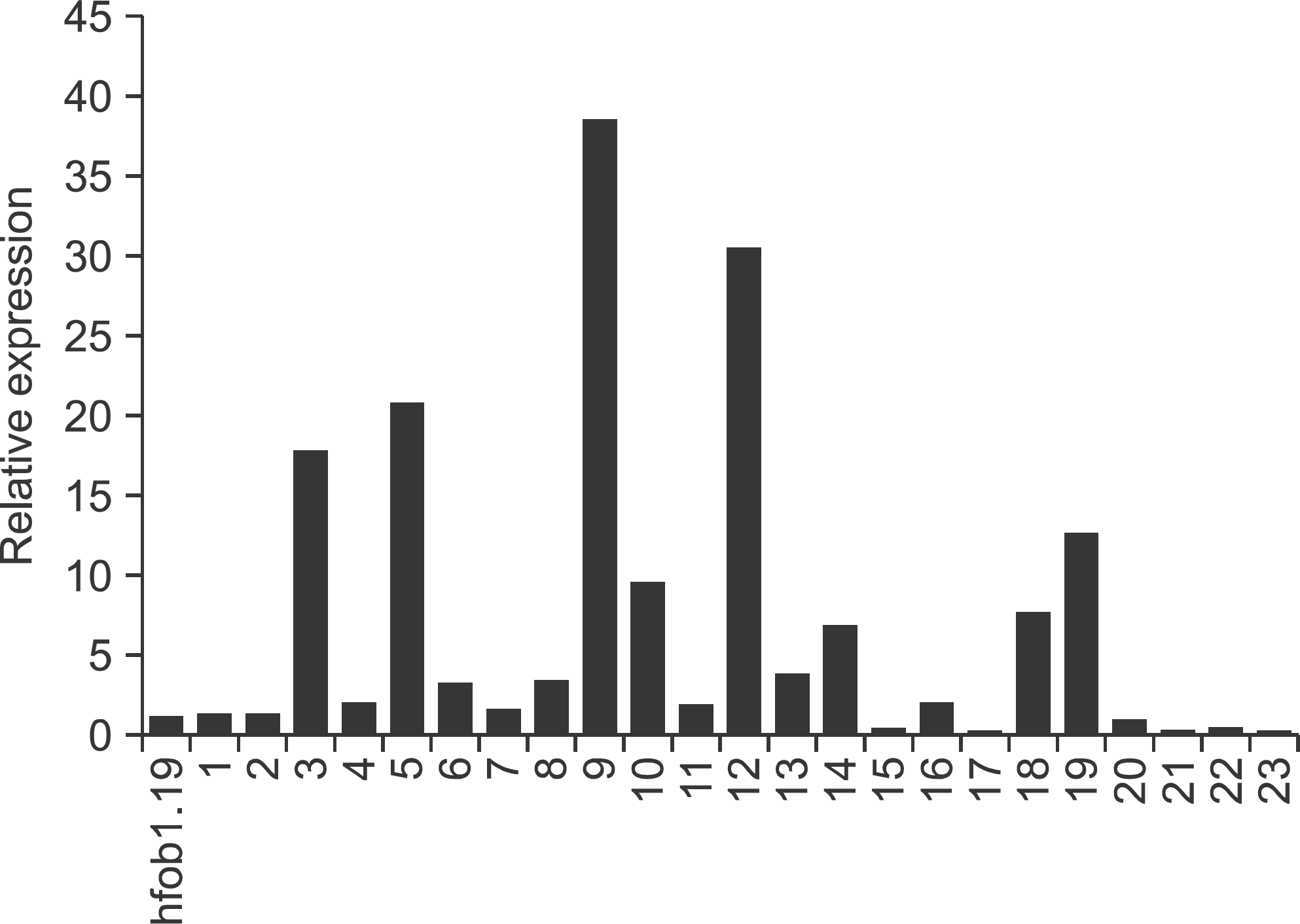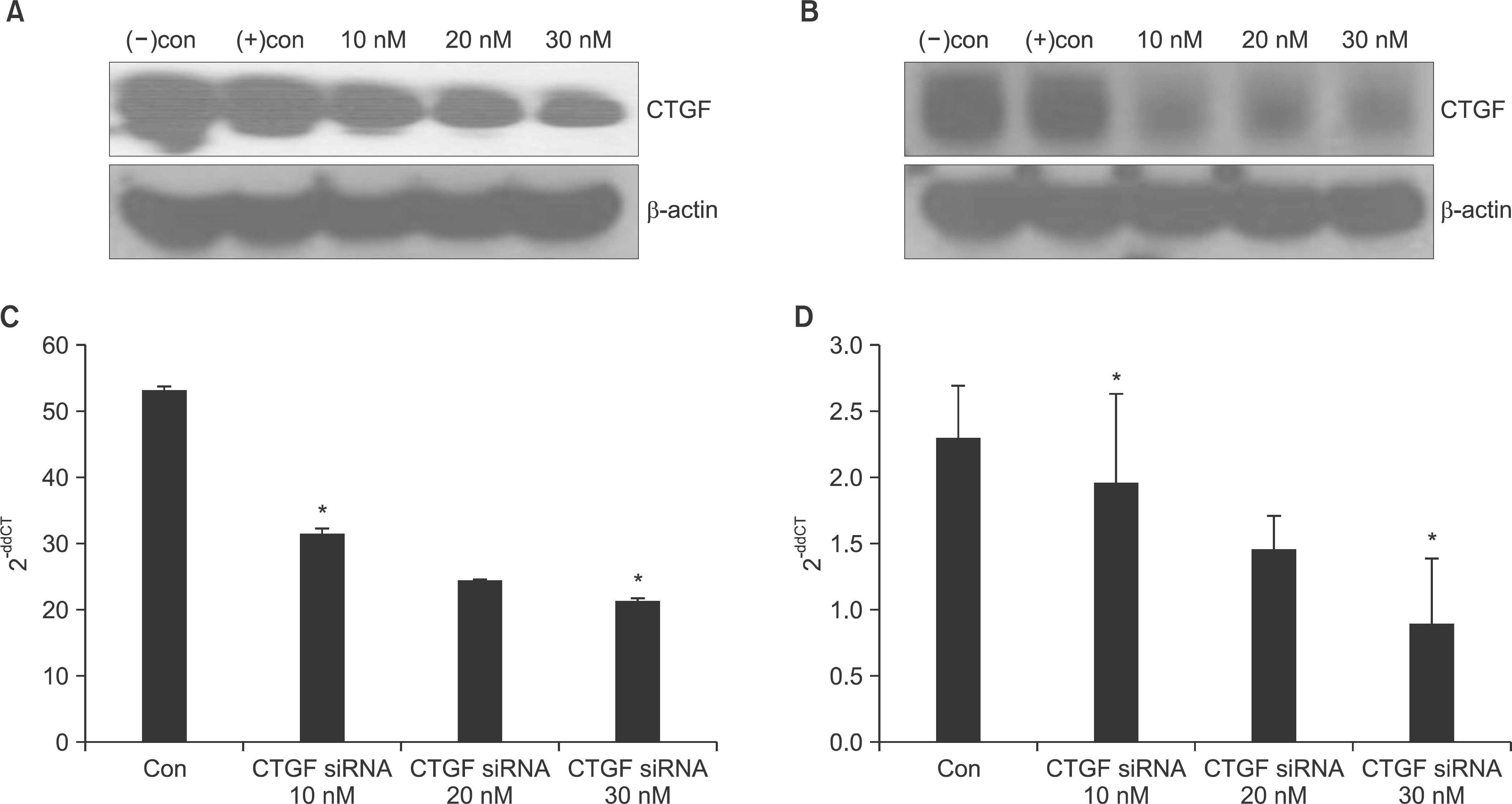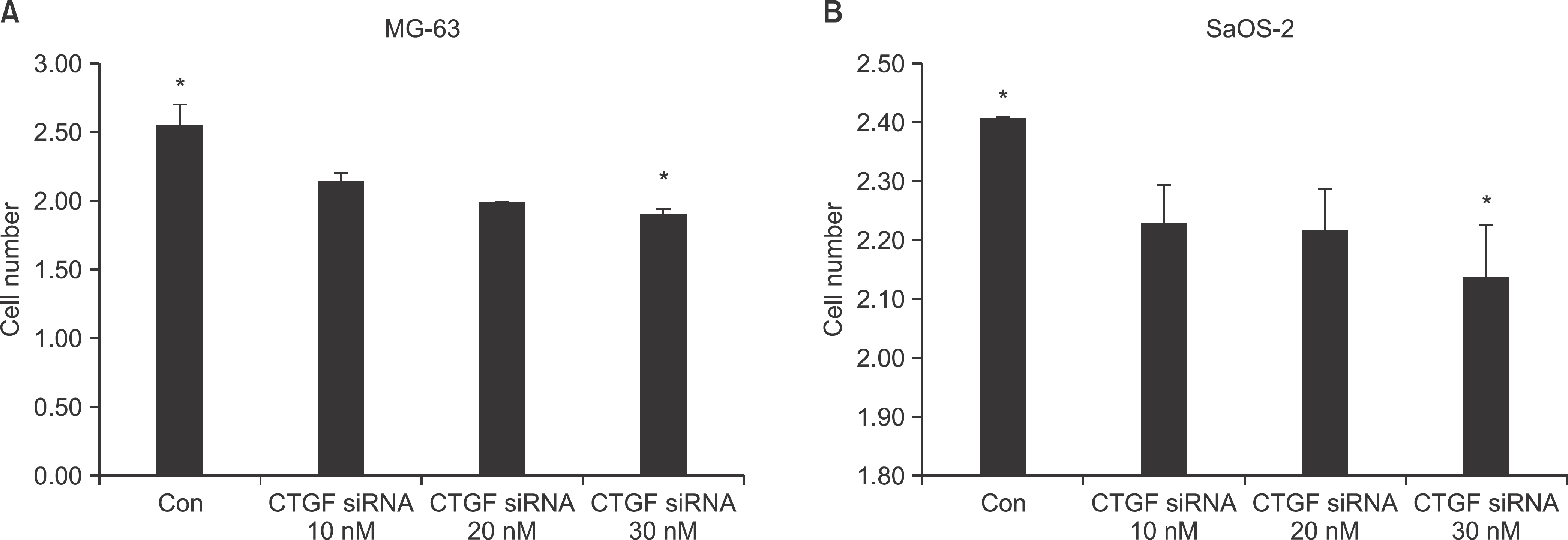Abstract
Purpose
To examine the expression of Connective Tissue Growth Factor (CTGF) in osteosarcoma and to evaluate its role in osteosarcoma invasion and proliferation.
Materials and Methods
The mRNA expression of CTGF from 23 patient-derived osteosarcoma cell lines was examined, and the role of CTGF in cell invasion and proliferation was examined using siRNA transfection.
Results
The over-expression of CTGF mRNA was observed in 17 cell lines (74%). CTGF-specific siRNA transfection into SaOS-2 and MG63 cell lines resulted in efficient knockdown of CTGF expression on Western blot analysis. siRNA transfected cells showed decreased migration on Matrigel invasion assay and decreased cell proliferation on WST-1 assay.
Go to : 
References
1. Geller DS, Gorlick R. HER-2 targeted treatment of osteosarcoma: the challenges of developing targeted therapy and prognostic factors for rare malignancies. Expert Opin Pharmacother. 2010; 11:51–61.

2. Janeway KA, Barkauskas DA, Krailo MD, et al. Outcome for adolescent and young adult patients with osteosarcoma: a report from the Children's Oncology Group. Cancer. 2012; 118:4597–605.
3. Holbourn KP, Acharya KR, Perbal B. The CCN family of proteins: structure-function relationships. Trends Biochem Sci. 2008; 33:461–73.

4. Pan LH, Beppu T, Kurose A, et al. Neoplastic cells and proliferating endothelial cells express connective tissue growth factor (CTGF) in glioblastoma. Neurol Res. 2002; 24:677–83.

5. Dhar A, Ray A. The CCN family proteins in carcinogenesis. Exp Oncol. 2010; 32:2–9.
6. Lin MT, Kuo IH, Chang CC, et al. Involvement of hypoxia-inducing factor-1alpha-dependent plasminogen activator inhibitor-1 upregulation in Cyr61/CCN1-induced gastric cancer cell invasion. J Biol Chem. 2008; 283:15807–15.
7. Manara MC, Perbal B, Benini S, et al. The expression of ccn3 (nov) gene in musculoskeletal tumors. Am J Pathol. 2002; 160:849–59.
8. Moritani NH, Kubota S, Sugahara T, Takigawa M. Comparable response of ccn1 with ccn2 genes upon arthritis: An in vitro evaluation with a human chondrocytic cell line stimulated by a set of cytokines. Cell Commun Signal. 2005; 3:6.

9. Xie D, Nakachi K, Wang H, Elashoff R, Koeffler HP. Elevated levels of connective tissue growth factor, WISP-1, and CYR61 in primary breast cancers associated with more advanced features. Cancer Res. 2001; 61:8917–23.
10. Chen PP, Li WJ, Wang Y, et al. Expression of Cyr61, CTGF, and WISP-1 correlates with clinical features of lung cancer. PLoS One. 2007; 2:e534.

11. Deng YZ, Chen PP, Wang Y, et al. Connective tissue growth factor is overexpressed in esophageal squamous cell carcinoma and promotes tumorigenicity through beta-catenin-T-cell factor/Lef signaling. J Biol Chem. 2007; 282:36571–81.
12. Clark JC, Akiyama T, Thomas DM, et al. RECK in osteosarcoma: a novel role in tumour vasculature and inhibition of tumorigenesis in an orthotopic model. Cancer. 2011; 117:3517–28.
Go to : 
 | Figure 1.mRNA Expression of CTGF in 23 patient-derived osteosarcoma cell lines. Human osteoblast cell line (hFOb 1.19) was used as the control cell line. |
 | Figure 2.siRNA knockdown of CTGF in osteosarcoma cell lines. (A, B) Western blot analysis and (C, D) Real-time PCR. MG63 (A, C) and SaOS-2 (B, D) cell lines were used. *p<0.05. |




 PDF
PDF ePub
ePub Citation
Citation Print
Print




 XML Download
XML Download